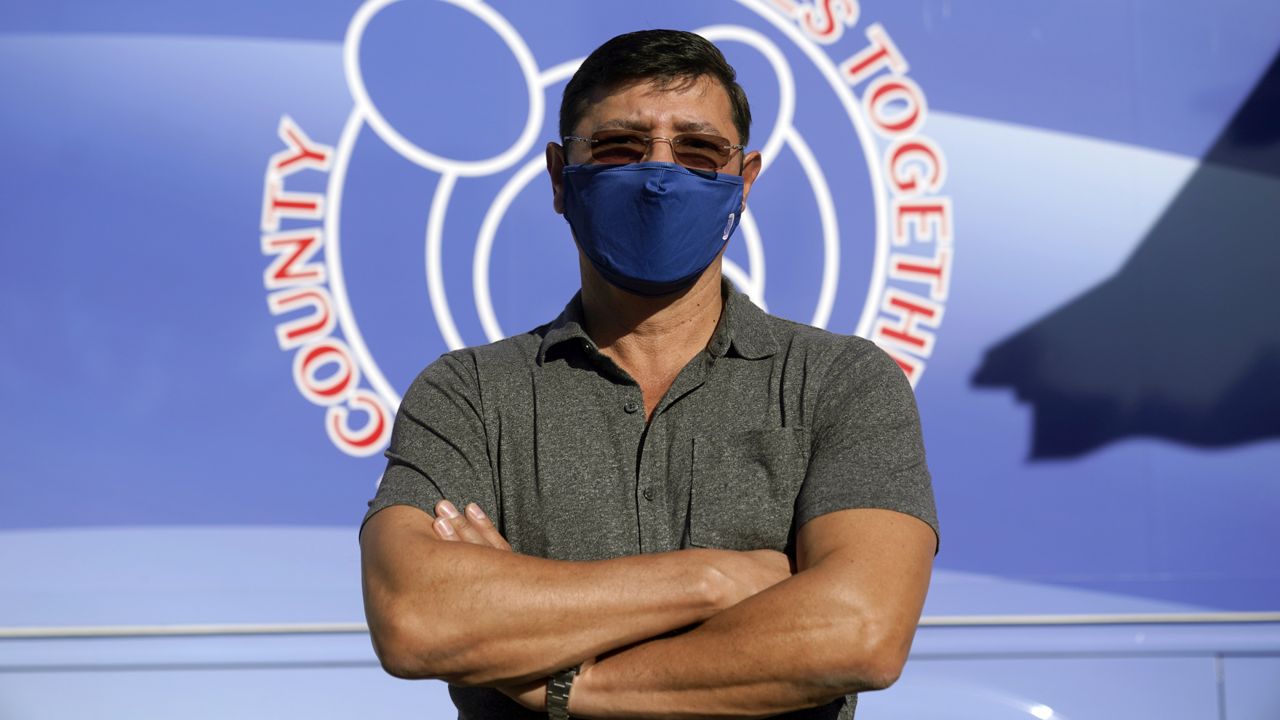SANTA ANA, Calif. (CNS) — Orange County reported just 47 new COVID-19 cases and one additional death Wednesday as hospitalization rates continued a downward trend.
Hospitalizations due to the coronavirus dropped from 97 Tuesday to 89, and the number of patients in intensive care decreased from 26 to 25.
The county had 37.6% of its ICU beds and 77% of its ventilators available.
Wednesday's figures brought the county's totals to 254,163 cases and 4,979 fatalities since the pandemic began, according to the Orange County Health Care Agency.
There were more signs of a return to normalcy this week, with Knott's Berry Farm preparing to reopen for season pass holders on Thursday. The Buena Park theme park will reopen for everyone on May 21, and on Wednesday, Knott's officials announced a reopening of its Soak City Waterpark on May 29, with passholders getting a preview on May 22-23.
Meanwhile, restaurateurs at the District at Tustin Legacy are up and running again, but are struggling to fill jobs amid much competition for staff members. The shopping center is hosting a job fair at 11 a.m. Thursday for its restaurant owners.
One of the county's most prominent hotels, the Hilton Anaheim, is set to reopen on May 20, officials said. Hotels in Anaheim are seeing ramped-up business since Disneyland's reopening last week.
The county meets two of the three categories for the least-restrictive yellow tier of the state's four-tier system for reopening the economy, but remained in the orange tier after the weekly rankings were released Tuesday.
Orange County's weekly average of daily new cases per 100,000 residents improved from 2.6 to 2.4. A graduation into the yellow tier requires that the case rate must get below 2 per 100,000 people. A county must maintain metrics for a tier for two weeks before graduating to a less restrictive level.
The overall test positivity rate improved from 1.4% to 1.3%. And the county's Health Equity Quartile rate, which measures positivity in hotspots in disadvantaged communities, declined from 1.9% to 1.4%.
"The numbers are looking good," Orange County CEO Frank Kim told City News Service on Tuesday. "And they're getting better. We're back to decreasing case rates."
The case rate as of Tuesday, for example, had fallen to 2.3 per 100,000 residents.
The county may get to the yellow tier soon, Kim said.
"It's possible now," he said. "Before the case rates plateaued at 2.8 and 3, but now I'm seeing them decrease. A week ago it was 2.7 and it's come down to 2.3, so it's moving in the right direction."
One thing that's holding the county back is its testing average. At 288.2 tests per 100,000 people, it is just below the state average of 355, Kim said. One reason Los Angeles County was able to reach the yellow tier this week was the county was testing at a much higher rate than the state average and it gets extra credit for that, Kim said.
The county's average last week was 308.8 per 100,000 residents. Another 9,444 tests were logged Wednesday, pushing the total to 3,698,328.
State officials have told the county it will receive $4.5 million to encourage more inoculations, so county leaders are now discussing how to best spend it to get more residents to get a jab in the arm.
"I'm not in favor of going out and buying a bunch of gift cards so the question is how do you provide that incentive," Kim said.
About 1.6 million Orange County residents have received at least one shot of vaccine, and 1,073,205 have been fully vaccinated, he said. Over the next week or so, officials will start deciding when to close super Points of Dispensing sites, or PODS, and potentially shift into a more focused effort with mobile clinics, Kim said.



